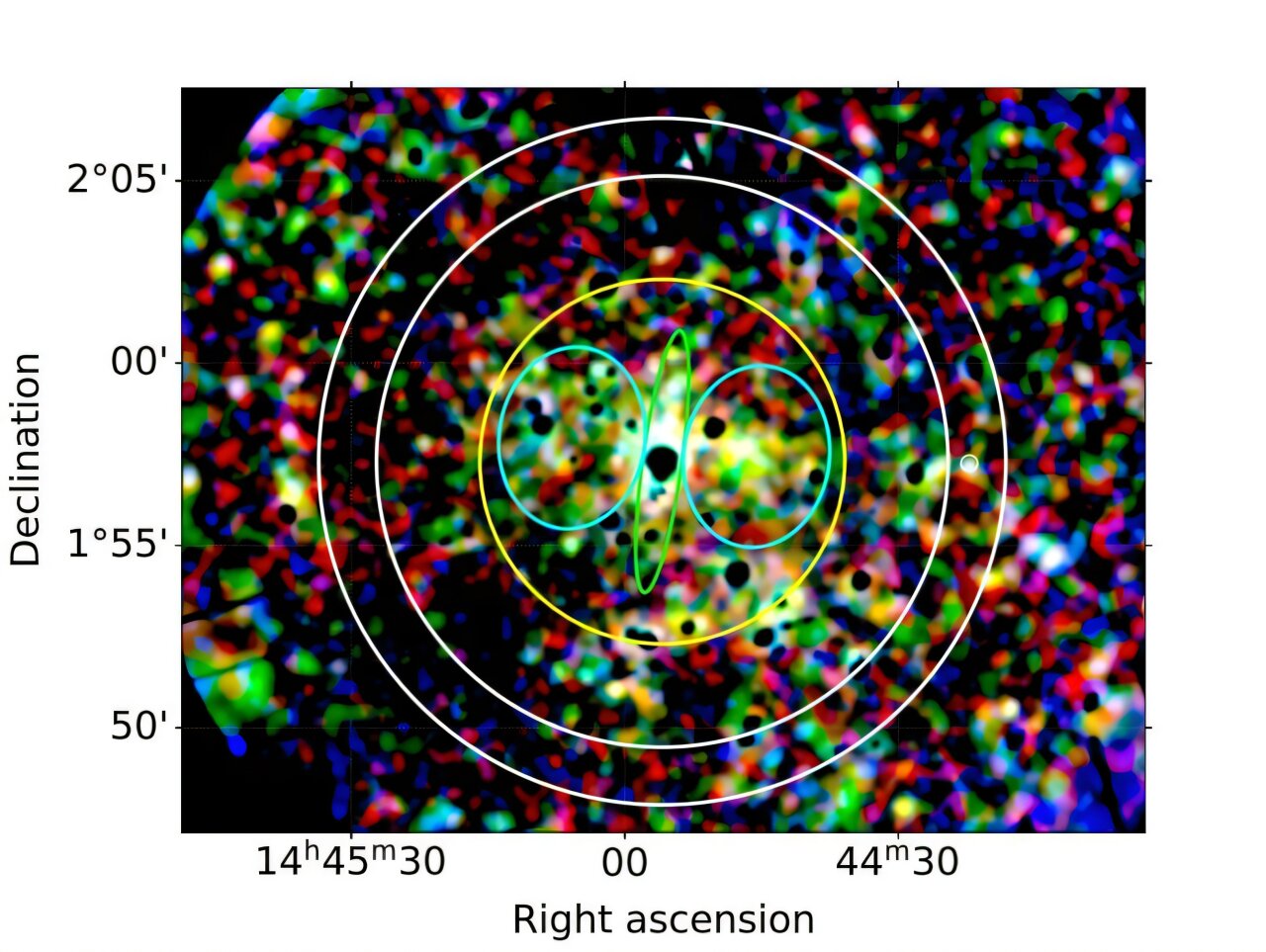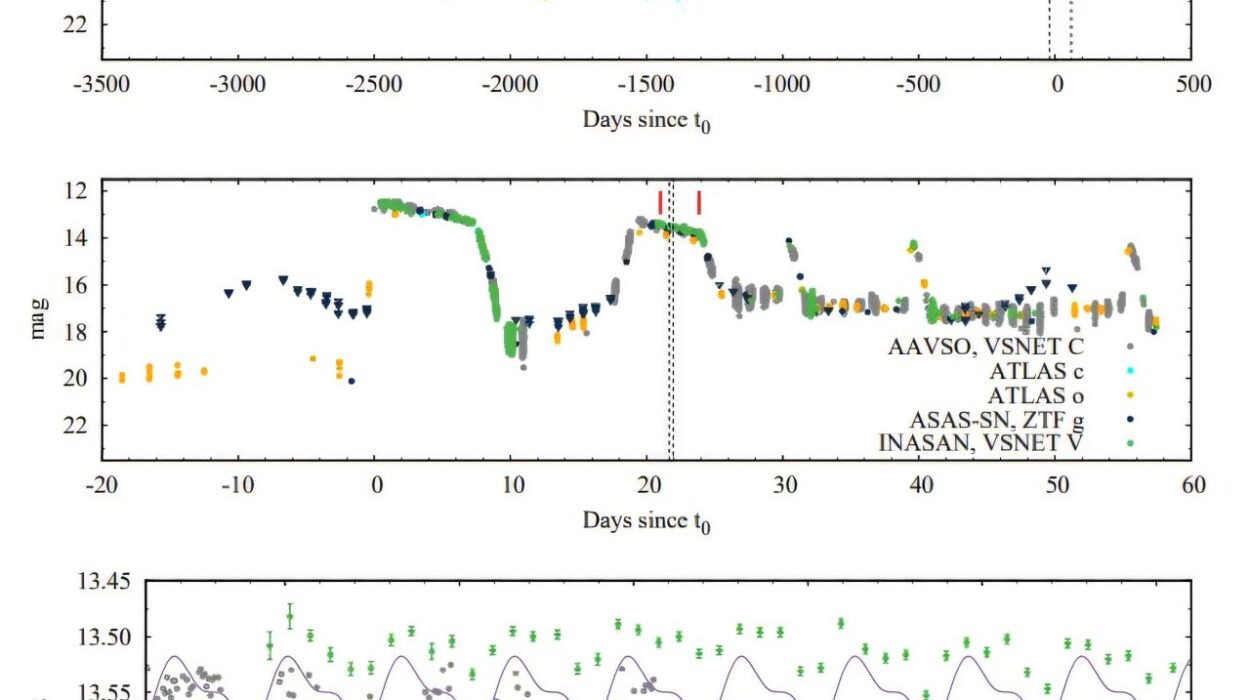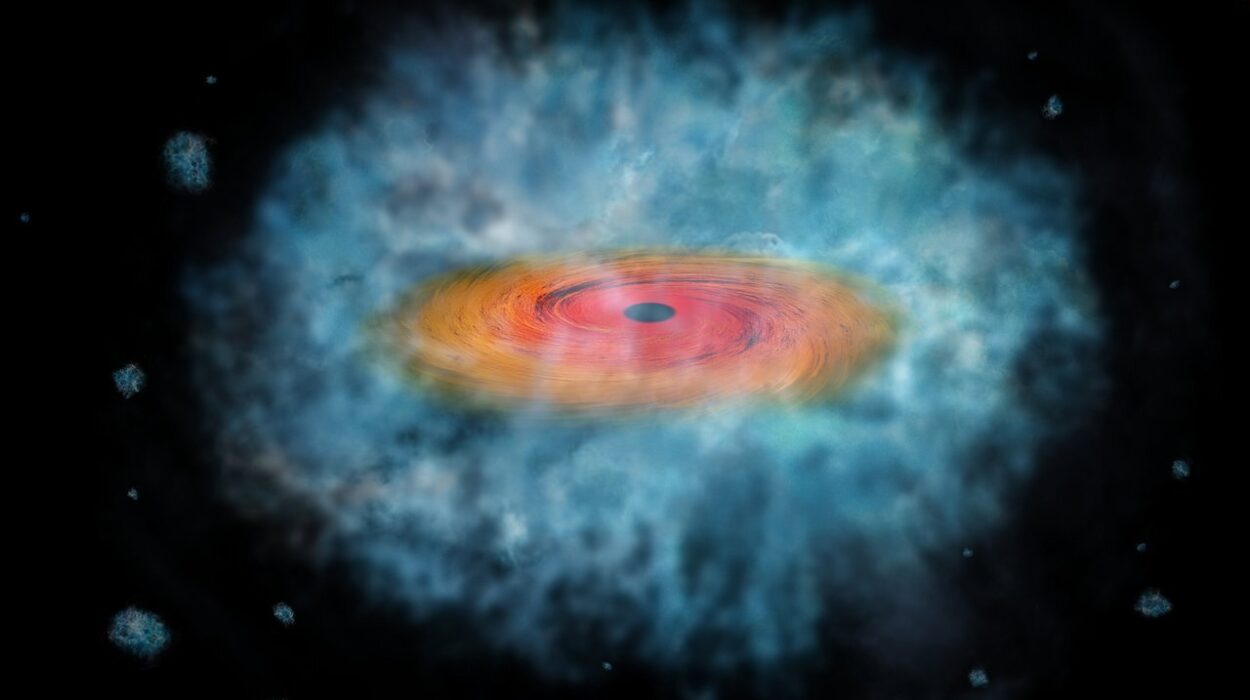High above our heads, far beyond the reach of any telescope we can hold in our hands, lies a colossal spiral galaxy named NGC 5746 — a silent, glittering city of stars nearly 95 million light years away. From Earth, it appears as a slim, glowing ribbon, seen almost edge-on, as if the universe itself had sliced open a spiral galaxy to show us its profile.
For years, astronomers have studied this galactic giant, intrigued by its size, shape, and calmness. NGC 5746 is a barred spiral galaxy, meaning it has a central bar-shaped structure of stars, much like our own Milky Way. Its stellar mass is immense — around 110 to 130 billion times the mass of our Sun — yet its rate of star formation has long seemed modest, producing less than a single solar mass worth of new stars each year.
It seemed, at first glance, like a quiet, mature galaxy — one that had finished its cosmic fireworks long ago. But new observations from the European Space Agency’s XMM-Newton satellite have changed that story. They reveal that beneath its calm surface, NGC 5746 holds a fiery secret: a vast halo of hot gas, glowing in X-rays, and evidence of an ancient outflow that once reshaped the galaxy’s very soul.
Peering into the Halo
In the early 2000s, astronomers using NASA’s Chandra X-ray Observatory reported a discovery that set off ripples in the astrophysics community — a faint, extended X-ray halo surrounding NGC 5746, stretching tens of thousands of light years from the galaxy’s disk. Such halos are thought to be made of superheated gas, remnants of violent stellar processes and galactic winds that carry energy and matter far beyond the regions where stars are born.
But years later, follow-up studies challenged that claim, suggesting that the supposed halo might not exist after all. Was it an observational error? A mirage created by background noise? The doubt cast a shadow over one of the galaxy’s most fascinating mysteries.
Now, a team of German astronomers, led by Roman Laktionov of the Dr. Karl Remeis Observatory in Bamberg, has returned to this puzzle with more powerful tools and sharper eyes. Using the European Photon Imaging Camera (EPIC) aboard ESA’s XMM-Newton satellite, they took a deeper, longer look at NGC 5746 — and what they found has reignited interest in this quiet cosmic giant.
“Due to the larger effective area and better low-energy response of EPIC compared to the Chandra ACIS, XMM-Newton is more sensitive at energies below about 1 keV,” the team explained. “This makes it better suited for detecting faint, diffuse emissions in the halos of galaxies.”
In other words, XMM-Newton can see what Chandra might miss — the faint, ghostly glow of hot gas stretching beyond the galaxy’s visible stars.
A Giant’s Hidden Halo
The observations revealed strong evidence of a diffuse X-ray halo surrounding NGC 5746, extending on average to about 100,000 light years — roughly the same size as the Milky Way itself — and even farther, up to 130,000 light years, to the east and west of the galactic disk.
The halo’s temperature is about 0.56 keV, equivalent to several million degrees Celsius. That’s hotter than the halos seen around most other spiral galaxies, hinting that NGC 5746 has undergone particularly energetic events in its past.
Such a halo is not merely decorative; it is the living atmosphere of the galaxy, a record of its inner storms. Within this vast shroud of plasma, the astronomers detected something even more striking: two enormous, hot bubbles of gas, positioned symmetrically above and below the galactic plane.
These twin structures form a biconical shape, reminiscent of galactic outflows — streams of gas driven out from the center of galaxies by powerful forces such as stellar winds, supernova explosions, or even the feeding of a central black hole.
But in NGC 5746, the bubbles are less clumpy and more extended than those seen in other spiral galaxies. This suggests they are not currently being driven by ongoing starburst activity or active galactic processes. Instead, they appear to be the fossil remains of an ancient outflow, long since quieted, the heated gas now relaxed and spread across a vast volume of space.
A Quiet Giant, Not So Quiet After All
The presence of these bubbles and the hot halo tells a story of transformation. At some point in the not-so-distant past — cosmically speaking — NGC 5746 likely went through a period of intense star formation, a “starburst” phase when new stars were being born at a furious pace.
Massive stars, burning their fuel quickly and dying young, exploded as supernovae, releasing titanic amounts of energy. The combined force of those explosions could have driven powerful winds that blew gas and plasma out of the galaxy’s disk, carving the enormous structures now seen in X-rays.
Though today the galaxy’s star formation rate appears modest, hovering around 0.8 to 1 solar mass per year, the new findings suggest this number has been underestimated. Based on the characteristics of the halo and the size of the bubbles, the researchers estimate that NGC 5746 may currently be forming stars at a rate closer to 2.9 solar masses per year — nearly three times higher than previously thought.
This changes how astronomers understand not only NGC 5746 but also galaxies like it — large, barred spirals that seem dormant on the surface yet carry the echoes of past cosmic storms in their halos.
The Warm Heart of a Galaxy
Inside the galaxy itself, the XMM-Newton data revealed more surprises. The disk of NGC 5746 contains plasma with a temperature of about 0.7 keV, slightly hotter than the halo that surrounds it. The researchers also found that much of the X-ray light coming from the disk isn’t from diffuse gas alone but is dominated by unresolved X-ray binaries — pairs of stars where one, often a neutron star or black hole, feeds on material from its companion, releasing X-rays in the process.
These X-ray binaries are a galaxy’s heartbeat, signs of dynamic, ongoing stellar evolution. Their presence underscores the complexity of NGC 5746’s inner life — a balance of calm and chaos, of death and rebirth.
The Power of XMM-Newton
ESA’s XMM-Newton observatory has been orbiting Earth since 1999, carrying some of the most sensitive X-ray instruments ever built. Unlike visible light telescopes, which show us the beauty of stars and galaxies in familiar colors, X-ray telescopes reveal a universe of extreme energy — where matter falls into black holes, stars explode, and galaxies breathe fire.
By observing NGC 5746 in X-rays, astronomers have uncovered layers of history invisible to optical telescopes. What looks like a tranquil, aging galaxy in visible light is, in the X-ray spectrum, alive with the faint glow of ancient violence.
Rethinking Galactic Evolution
The discovery of a hot, extended halo and fossil outflow around NGC 5746 offers more than just a new chapter for this particular galaxy — it challenges the broader understanding of how spiral galaxies evolve.
For years, astronomers believed that only galaxies undergoing intense starbursts or hosting active black holes could generate large-scale outflows powerful enough to heat and push gas to such great distances. But NGC 5746 seems to have done so despite its relatively calm appearance and moderate star formation rate.
This suggests that even ordinary spiral galaxies can experience brief, intense episodes of energy release capable of reshaping their halos for millions of years afterward. It also implies that galactic halos — once thought to be static — may be far more dynamic and responsive to their galaxies’ internal histories than we once imagined.
A Cosmic Memory Written in Fire
Galaxies, like living organisms, carry the marks of their past. The glowing halo of NGC 5746 is a memory — a remnant of forces that once tore through its heart, now softened into a whisper of heat and light.
Billions of years from now, those hot bubbles may cool and collapse, feeding new generations of stars. The energy released long ago by dying suns may one day ignite new ones. In that sense, NGC 5746 is not just a distant object of study, but a symbol of the universe’s eternal rhythm — destruction and creation intertwined in cosmic balance.
Looking Ahead
For astronomers, NGC 5746 is now a crucial window into the quiet power of galaxies. Future observations, perhaps with next-generation X-ray telescopes like Athena, will help refine our understanding of its structure and evolution.
Each new discovery reminds us that the cosmos is never truly still. Even the calmest galaxies harbor storms within — long-forgotten tempests of energy that shaped the stars we see today.
NGC 5746, once thought to be a silent spiral lost in the depths of space, now speaks with a new voice. It tells us that every galaxy carries stories written in light and heat, waiting for the right eyes — and the right instruments — to read them.
In the cold emptiness of space, a galaxy breathes. Its halo glows. Its past lingers like the fading embers of a cosmic fire. And through the eyes of XMM-Newton, we are there to witness it — the living memory of a universe that never stops creating.
More information: Roman Laktionov et al, Deep XMM-Newton observation reveals hot gaseous outflow in NGC 5746, arXiv (2025). DOI: 10.48550/arxiv.2510.00868






